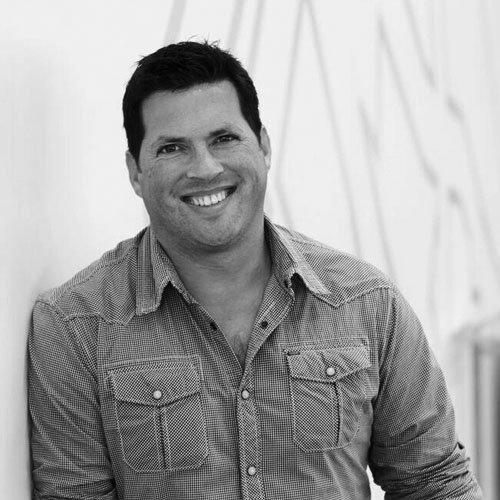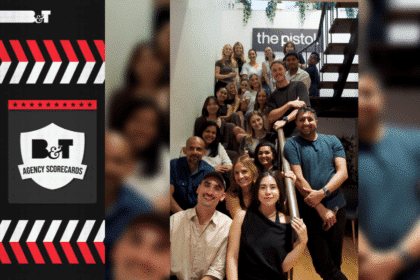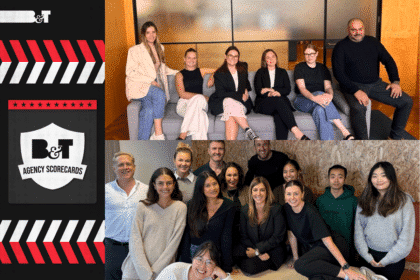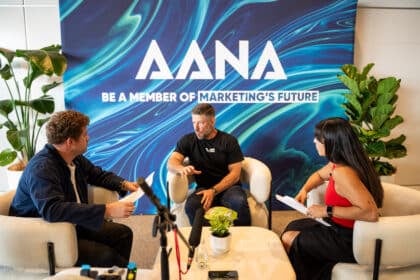In business, time is money and that maxim is more pertinent to those in content creation than anyone else. The McLaren Formula 1 team has been working with Smartsheet’s Brandfolder and its artificial intelligence (AI) tools to help get its race day content out quickly and on-brand.
“In a lot of instances, it reduces the time to get the photos from days to literally minutes,” explained Nigel Mendonca, Smartsheet’s vice president Asia Pacific & Japan.
“They [McLaren] have told us that they’ve calculated a seven times faster distribution of race day footage and assets due to the AI tagging and search functions.”
Digital asset management is becoming an increasingly big focus for businesses involved in the creative industries — whether in advertising, marketing, content, or anything else. The days of teams running around with information stored on hundreds of hard drives are gone and simple cloud storage tools are no longer able to cut the mustard when it comes to producing at scale.

“Our partnership with McLaren has been in operation for coming up to two years. They’ve leveraged Smartsheet’s platform for a number of things but digital asset management is a big part of it.
“It’s an AI-based platform that uses AI to catalogue those images and provide easy search capabilities. If you think about the way McLaren as a racing team works, they not only compete in 23 F1 races around the globe throughout the year but they’re one of the fastest-growing teams in the competition from an audience point of view. A huge part of what they’re doing from a commercial perspective is focused on engaging with their fans.”
With more than 10 million followers on Instagram and 3.3 million on TikTok, they have a demanding audience ready to lap up any content from the Grand Prix or any other event. However, the team also has commercial partners and sponsors that need to have their insatiable appetites for content sated just as much as the fans.
“There’s a big demand for [McLaren] to provide as close to real-time as possible digital assets out to the field, whether it’s for their audiences, their fans, sponsors etc,” explained Mendonca.
“There are really specific briefs around the images, as well. A sponsor might say, ‘We want some photos that include our logo with a particular driver at a particular race or part of a weekend.’ So Brandfolder allows to easily search and retrieve photos based on the AI tags in minutes whereas it previously used to take them days.”
Brandfolder’s AI also lets McLaren — and a bunch of other organisations — make quick and sweeping changes to consistent sections of digital assets in minutes, rather than the hours and days it had previously taken.
“If you think about an organisation, McLaren is one example, but a totally different example might be a university that has multiple faculties but consistent branding across the organisation. They’re very protective of their brand but the different faculties might have different colours or a slightly different logo,” said Mendonca.
“The content creation function within Brandfolder allows them to lock down their brand briefs for the different areas of their organisation but then make wholesale changes across all of them, whether it be for a social media or digital marketing placement. It could even be printing to physical assets for the different activities that they run.”
Smartsheet is not the only company operating in this space starting to use AI to help its clients steal a march on their rivals with improved speed and consistency. Aussie startup darling Canva recently announced its Brand Kit series of tools with expanded AI capabilities and digital media giant Adobe continues to bang the AI drum across its range of tools.
According to Mendonca, this change in the industry is leading to more “citizen project managers.”
“Most businesses have their formal project managers, it could be an IT project manager or it could be someone else in the business that is formally trained and understands the vernacular and the technologies that go with that.
“But the reality is that in most businesses today, just about everyone is an informal project manager, right? They just don’t call it that. The elements of the job require them to manage projects and programs of work. For marketers… they’re managing multiple projects and programs of work.”
But, Mendonca assured B&T that Smartsheet was not intending to make the role of the project manager redundant it was simply working to boost productivity.
“We’re all about augmenting humans to be more productive to help them save time. A lot of what our platform helps with is automatic workflow. There is a lot of productivity gain to be had in removing mundane and potentially error-prone tasks from human responsibility by automating workflows and having systems talk to other systems,” he said.
By removing the human part of workflows, Smartsheet helped McLaren upload 90 terabytes of assets to one central cloud-based system.
“They literally took big physical storage devices and shipped them across to us and migrated those into our Brandfolder platform,” said Mendonca.
“That’s the major opportunity for a lot of organisations, taking these manual or unstructured workflows and processes and bringing them together in a more logical, productivity-focused way of doing things.”
Of course, data on such a scale requires a lot of processing power. And, as industries around the world are realising, lots of data can lead to lots of emissions. Mendonca said that while the question of sustainability was “really important,” he believed that overall workflow efficiencies would lead to emission reduction in the long run.
“A big part of what we do replaces a lot of manual processes and automates that. So, the overall power consumption — computing, paper-based elements, all that sort of stuff — the digitisation of workflows and consolidating that into a more automated, more efficient way of doing things is ultimately going to cut down on the overall footprint.”
Lead image credit: McLaren








